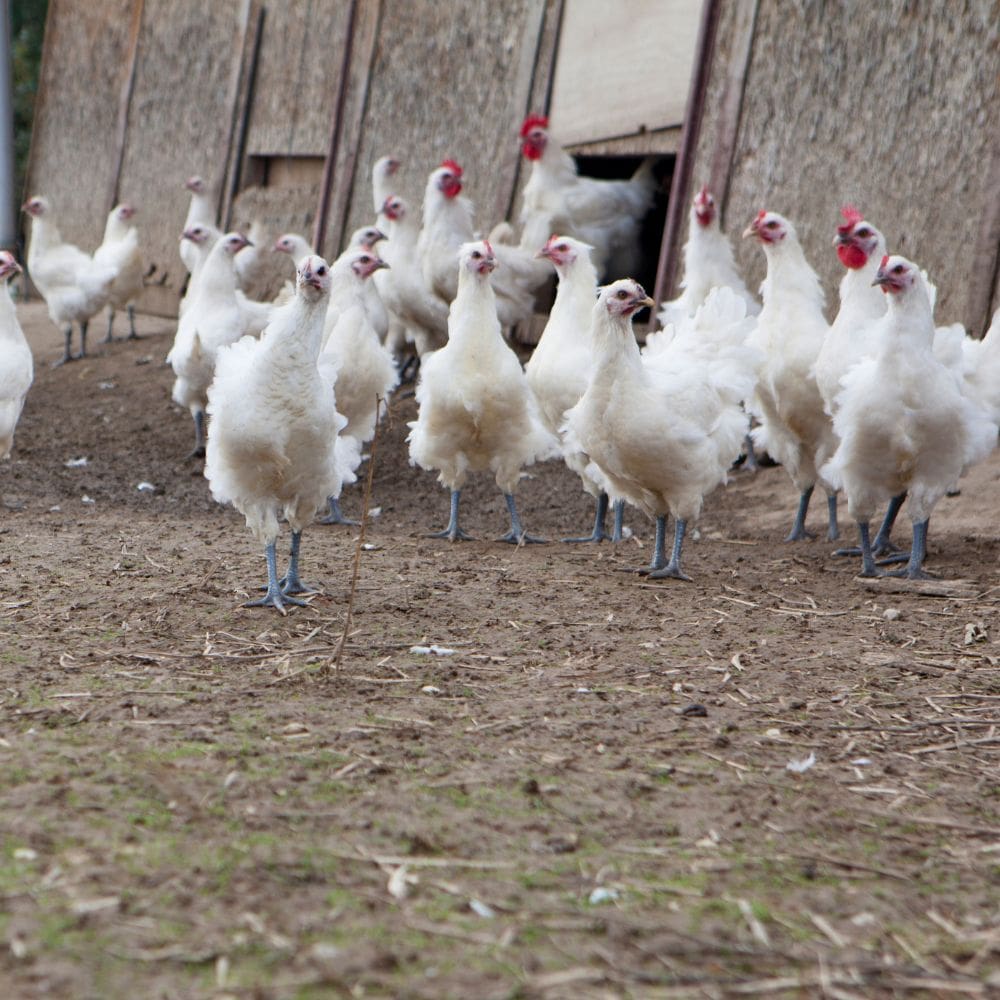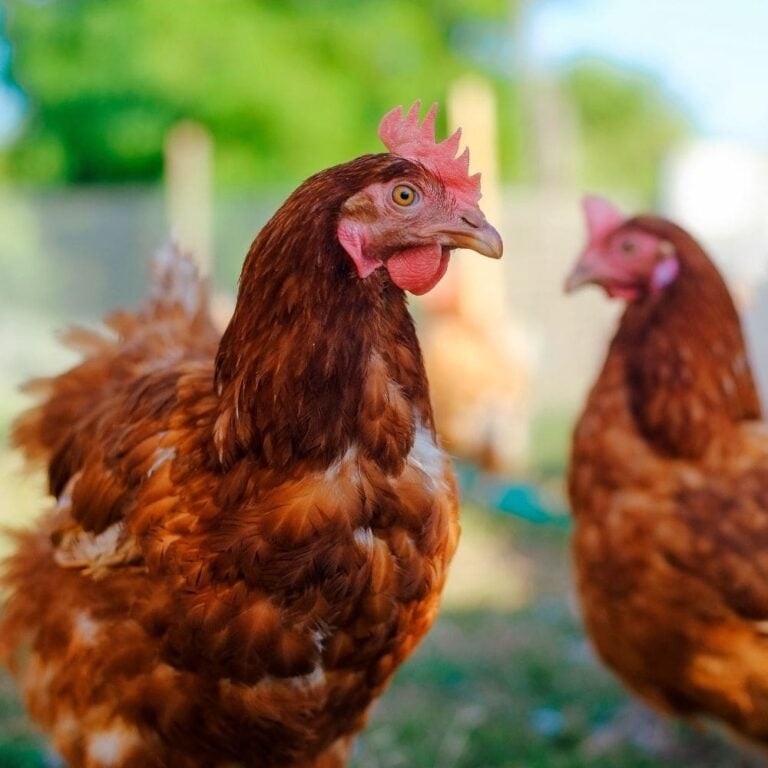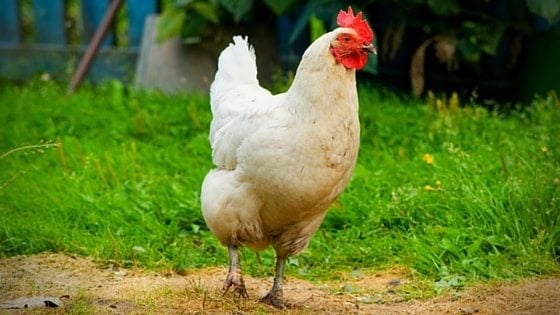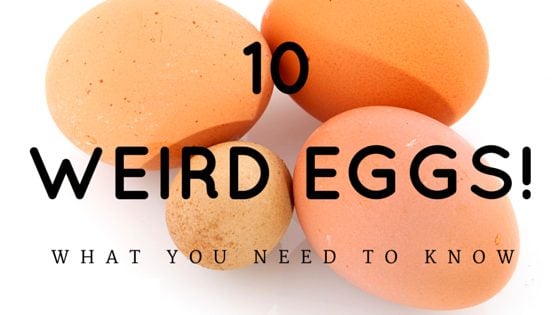Feeling like champagne and caviar? Why not throw in some expensive Bresse Chicken to make your night on the town complete? Why not? For starters, it might be hard to find. And since the price is twice as nice, you might settle for that chicken sandwich from your local fast food favorite! 😆
Bresse chicken is said to be one of the most expensive dishes out there. What’s so special about this bird and why is it so expensive? Follow me to see.

What’s So Special?
Let’s jump right into the most interesting part about this Bresse chicken breed. It is said to be the most delicious chicken, and the most expensive, in the world. That’s a big shoe to fill.
It’s unique in that the meat of this bird is marbled more like that of beef than chicken and has a distinct flavor. It’s a genetic difference that, apparently, no other chicken breed in the world has. And, THAT, my chicken-loving friends, is why THIS breed is so special.
They also have more delicate bones (light bones), thin skin, and a larger percentage of tender, dark meat than other breeds. But it’s not just genetics that contribute to the luxurious specialties of this breed. The way they are raised, and the timing of their demise (uh hum…I mean by the time of their processing).
This breed must be raised as foragers, primarily, for about 16 weeks (usually no longer than 24 weeks). And then they are confined in a “resting period” to finish up for the last 2 to 4 weeks to help prevent toughening of the meat. The resting period is essentially confinement to prevent much movement. The birds are fed milk and corn (or corn soaked in milk) during this time to further the process of fat marbling (if raised by professional breeders who know what they are doing with this breed).
How Pricey Are These Chickens?
And now you might understand why this breed is so. very. expensive. How expensive? Well, as an example, you can buy 10 chicks from Bresse Farms in Mississippi for around $127.00 (that’s with shipping). But much like Ayam Cemani, you need to check out any hatchery or breeder to be sure you are getting the true breed. The ones listed at Bresse Farms are considered to be American Bresse Chickens.
The French only allow a small percentage of these specialty meat (and egg) birds to be exported. Those are truly French Bresse chickens.
What about ordering a Bresse chicken dinner at a restaurant? Those prices vary greatly, but you can be prepared for it to break the bank.
Can you tell the difference between American and French Bresse chickens? Probably – if you are a serious breeder or chicken connoisseur, or perhaps a French chef. And if you want to try what has been called the tastiest chicken in the world, I would suggest an officially French variety.
What About Cornish Cross?
Why would someone pay so much more for a Bresse chicken when they can buy a Cornish Cross chicken for a lot less? Well, there is a bit of a trend – people are searching for heritage chickens more often. Not everyone cares, but keeping the heritage breeds alive and well helps us all in the chicken world.
Cornish Cross chickens are fast and easy to raise (ready in 8 weeks), and I must admit they are pretty tasty. But it’s well known in the culinary world that Bresse has the Cornish beat by a long shot. And the Bresse breed is a heritage breed that is worth keeping strong.
Bresse Chicken History Snippet
The Bresse chicken breed finds its lineage in the 16th century, flourishing in the rustic beauty of France’s Bresse region (eastern France). According to this article, France only exports about 5% of this breed – adding to the allure and scarcity.
Its exquisite flavor captured the attention of nobility and connoisseurs, eventually leading to its esteemed AOC (Appellation d’Origine Contrôlée) recognition. This designation, a testament to its authenticity and heritage, firmly establishes the Bresse chicken’s status as a culinary treasure.
It has earned the nickname “queen of chickens” due to its unique set of genetics and marbling meat.
Bresse Personality
The Bresse chicken possesses a unique personality characterized by curiosity and vitality. Flourishing in free-range settings, these birds exhibit intelligence and sociability, often forming endearing connections with their caretakers.
Their insatiable curiosity fuels their prowess as adept foragers, a trait that significantly influences the tenderness and quality of their meat.
Appearance
The Bresse chicken has a bright red comb, beautiful white feathers, and blue legs and feet (more of a steel gray). I know it sounds very similar to a White Leghorn, but they are very different if look closely. They do have that nostalgic chicken feel just the Leghorn though.
The Bresse chicken is not large, the roosters weigh in at about 6-7 pounds at 16 weeks of age. The hens weigh less, at about 4-5 lbs.
Bresse Chicken FAQ
Are Bresse Chickens Good Egg Layers?
Yes, they are not just known for their chicken meat. They are also really good egg layers. They lay around 260 medium cream-colored eggs each year. This makes them excellent dual-breed chickens. Plus they have lovely dispositions, so they are pretty darn good pets as well.
Are Bresse Chickens Broody?
No. They do not tend to be broody girls. It’s not very likely that they will have the motherly instinct kick in, but if they do you’ll have to decide which route to take. Here is an article that might help you with this (and any other breed that may go broody on you at some time): Broody Hen – To Help or Hinder, You Decide
Are They Hardy?
This breed is hardy. They do well in heat and in cold temperatures. It’s one of the reasons this breed is a good heritage chicken breed. Want to learn about some more heritage chicken breeds? Read this: Top 7 Heritage Chicken Breeds Our Grandparents Kept
Do Bresse’s Need To Forage?
Bresse chickens do best when they have the ability to forage. So, free-ranging is a perfect fit for them. It’s also part of what makes their meat so tasty. If you want this breed for the special meat marbling, you should let them free range (provided they have plenty of bugs and vegetation to eat for the first 12 weeks. Then confine them and feed them corn soaked in milk for the last 2 to 4 weeks for fattening up and tenderizing. It’s how the pros do it.
If you don’t have the ability to free-range your flock, then you definitely need to stock up on natural treats and feed that will serve the same purpose. Try this high protein feed packed full of USA-sourced, non-GMO ingredients, and give this treat sampler bundle a try too (full of high protein insects and other goodies your chickens need to flourish).
Summary
Are you now wanting to try the unique flavor of the Bresse chicken? The genetic lineage of this breed certainly lures us chicken people in.
I say “Go for it!” Now you just have to decide whether you want to try the more accessible American White Bresse of North America or the more expensive and harder-to-find French Bresse.

A happy wife, mother, teacher, writer, hobby farmer, lover of chickens, and contributor to Pampered Chicken Mama!



![Stop Egg Eating Chickens Today: ‘What The Cluck?!’ Session 14 [Podcast]](https://thefrugalchicken.com/wp-content/uploads/2015/12/stop-egg-eating-chickens-feature-min.jpg)
![Rooster Rockstars: What Makes A Good Rooster Anyway? [Podcast]](https://thefrugalchicken.com/wp-content/uploads/2016/05/roosters-feature-min.jpg)
![Worming Your Backyard Chickens: Facts & Fiction [Podcast]](https://thefrugalchicken.com/wp-content/uploads/2016/10/worms-and-chickens.jpg)
